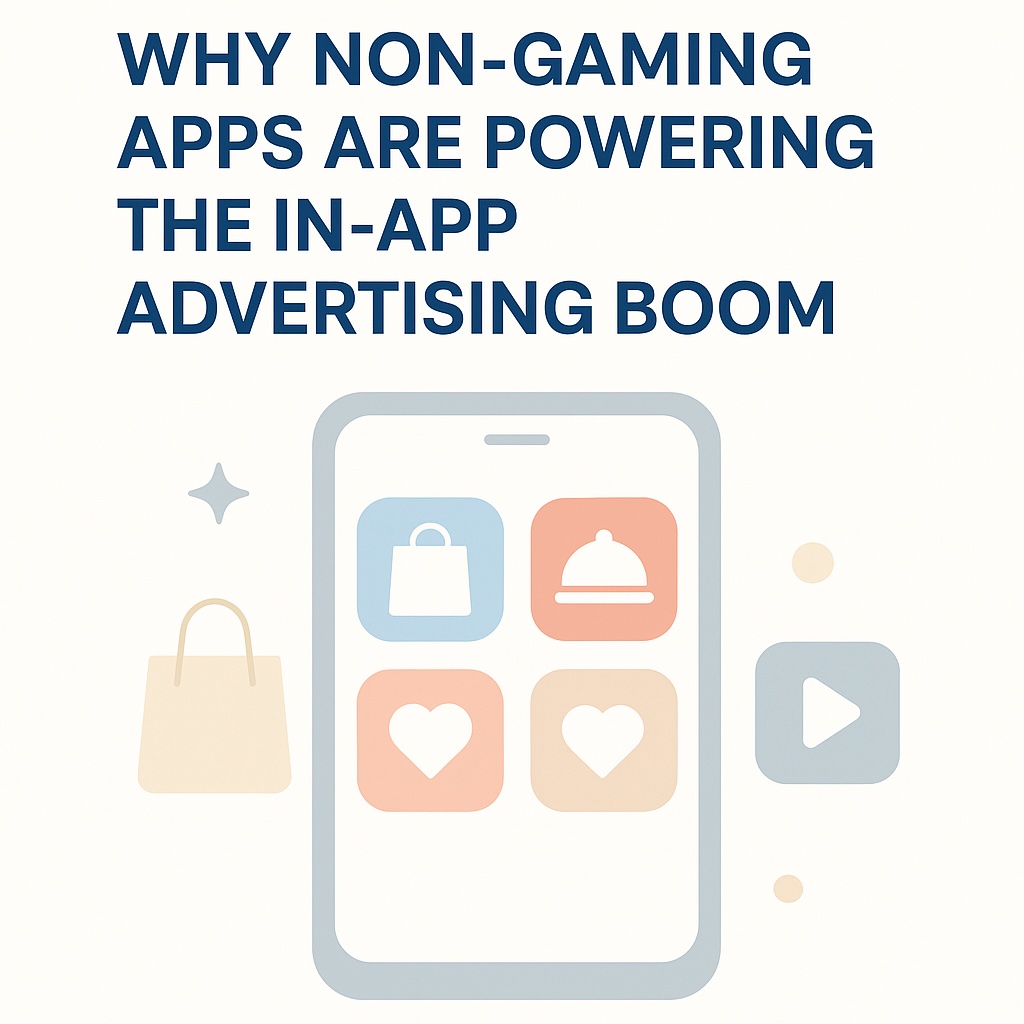
Why Non-Gaming Apps Are Powering the In-App Advertising Boom
Ever wonder where your phone time really goes? Here’s a clue: 88% of the time you’re on your phone, you’re inside an app—not your browser (eMarketer). That one number explains a profound shift in both user behavior and advertiser strategy. If attention is the new oil, then apps are the wells where it flows most abundantly.
Advertisers are following the trend. Global in-app ad spend reached $314.5 billion in 2023, up 14% year over year, and it’s projected to top $469 billion by 2027 (Business of Apps). For context, that’s bigger than the GDP of Norway.
So why are in-app ads pulling ahead—and what role do non-gaming apps play in this boom?
Apps Dominate Mobile Attention
Think about your own daily habits. You check Instagram in the morning, stream Spotify on your commute, glance at Slack or Gmail during work, scroll Pinterest while cooking, and unwind with Calm before bed.
Every one of those moments happens inside an app. The browser—once the front door to the internet—now lingers in the background. Apps are built for stickiness: they minimize friction, keep you engaged, and draw you back again and again.
For marketers, this is a goldmine. Ads work best where engagement is strongest.
Why In-App Ads Work Better
Performance data backs it up. In-app ads deliver stronger results than mobile web. A study by Embryo found the average click-through rate (CTR) for in-app ads is 0.56%, more than double the 0.23% seen on mobile web. In-app video ads perform even better, generating 7.5 times more clicks than mobile banners.
The conversion story is just as compelling. Apps drive three times more product views per session than mobile web, and rewarded video ads achieve completion rates close to 76% (Udonis). Whether it’s a shoppable carousel in a retail app or a sponsored playlist on Spotify, in-app formats feel native, relevant, and often useful—not intrusive.
The Rise of Non-Gaming Apps
For years, gaming dominated app monetization. But today, the real growth is coming from non-gaming categories.
According to data.ai, non-gaming apps accounted for nearly 50% of consumer app spend by 2023, powered by video streaming, retail, lifestyle, and social platforms. Even more striking, ad revenue from non-gaming apps is growing faster than gaming, thanks to diverse use cases and always-on engagement.
Consider how this plays out: TikTok, Instagram, and YouTube dominate user time with endless video feeds. Amazon and Shein collapse browsing into instant buying with shoppable placements. DoorDash and Uber Eats surface sponsored listings right at the moment of hunger. Meditation, fitness, and dating apps deliver aspirational environments where ads can feel like inspiration, not interruption.
Gaming may have paved the way, but non-gaming apps are writing the next chapter of in-app advertising growth.
The Challenges Ahead
This boom hasn’t been without friction. Privacy has shifted the landscape: Apple’s App Tracking Transparency (ATT) framework disrupted behavioral targeting, forcing advertisers to rethink. Contextual advertising—matching ads to content and environment rather than personal identifiers—has become more powerful as a result.
Fraud is another hurdle. Digital ad fraud costs the industry over $100 billion annually, with schemes like Vastflux (which spoofed 1,700 apps and infected 11 million iOS devices) showing the scale of the challenge. Advertisers are demanding partners who prioritize transparency and proactive fraud prevention.
What the Future Holds
Three themes define the future of in-app advertising.
First, privacy-first contextual targeting will dominate as AI makes ad matching more precise without relying on personal data. Second, non-gaming creative formats will keep expanding—expect to see interactive retail placements, social swipe-ups, polls, and branded streaming experiences. And third, user experience will be the ultimate differentiator. Apps that integrate ads smoothly will keep user trust while still unlocking revenue.
The Takeaway
The mobile web still matters for reach and discoverability. But when it comes to performance, apps have already pulled ahead. Nearly 90% of mobile time is spent in apps, and budgets have followed.
With $314 billion spent in 2023 and non-gaming categories driving the next wave of growth, apps in retail, social, lifestyle, and delivery are becoming the strongest advertising platforms. They offer deeper engagement, higher CTRs, and stronger conversions than the mobile web can match.
For marketers, the lesson is clear: if your strategy still leans heavily on web banners, it’s time to pivot. The apps shaping daily life—non-gaming as much as gaming—are where attention and ROI now live.

.png)

